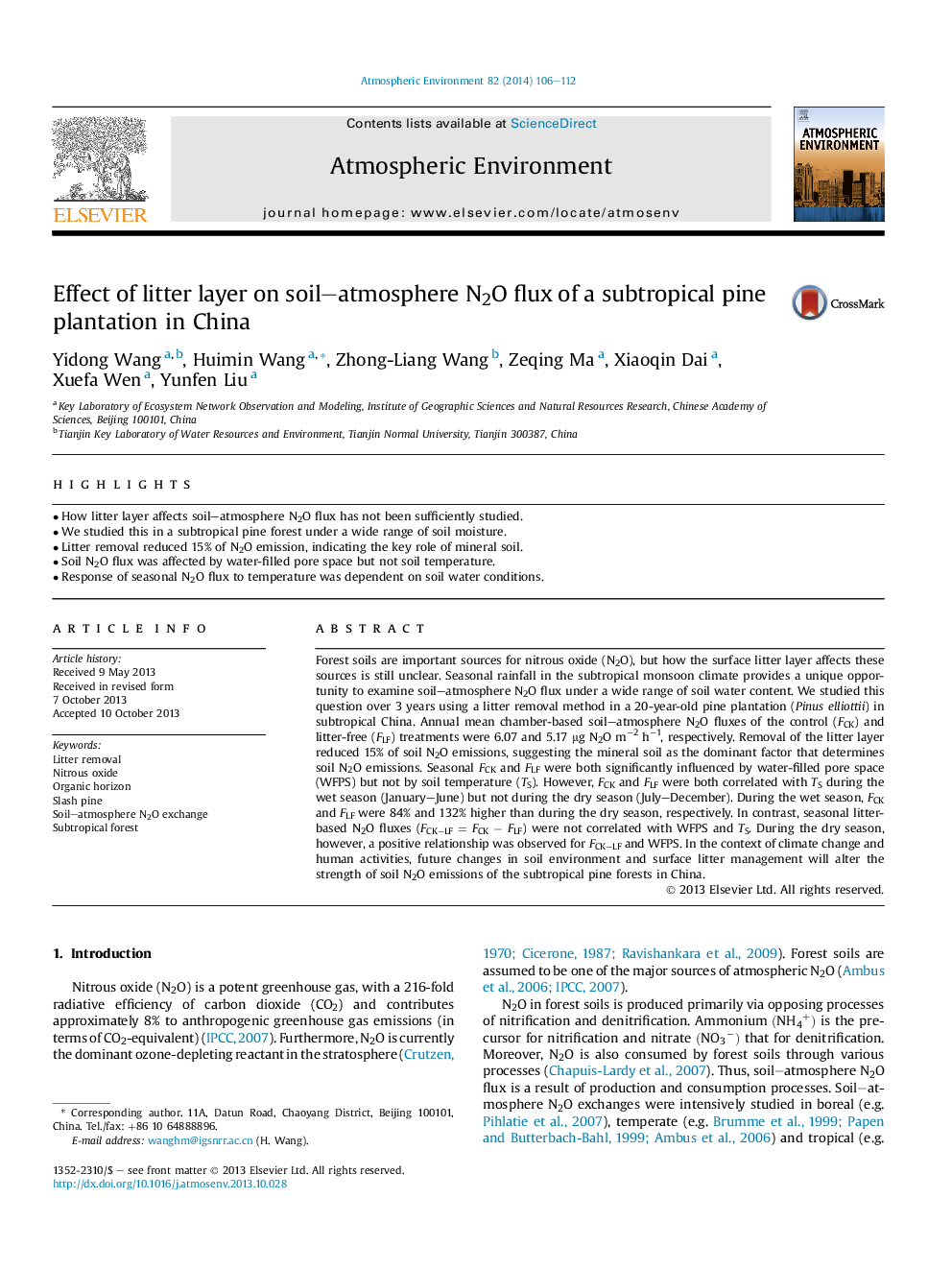| Article ID | Journal | Published Year | Pages | File Type |
|---|---|---|---|---|
| 6340032 | Atmospheric Environment | 2014 | 7 Pages |
Abstract
Forest soils are important sources for nitrous oxide (N2O), but how the surface litter layer affects these sources is still unclear. Seasonal rainfall in the subtropical monsoon climate provides a unique opportunity to examine soil-atmosphere N2O flux under a wide range of soil water content. We studied this question over 3 years using a litter removal method in a 20-year-old pine plantation (Pinus elliottii) in subtropical China. Annual mean chamber-based soil-atmosphere N2O fluxes of the control (FCK) and litter-free (FLF) treatments were 6.07 and 5.17 μg N2O mâ2 hâ1, respectively. Removal of the litter layer reduced 15% of soil N2O emissions, suggesting the mineral soil as the dominant factor that determines soil N2O emissions. Seasonal FCK and FLF were both significantly influenced by water-filled pore space (WFPS) but not by soil temperature (TS). However, FCK and FLF were both correlated with TS during the wet season (January-June) but not during the dry season (July-December). During the wet season, FCK and FLF were 84% and 132% higher than during the dry season, respectively. In contrast, seasonal litter-based N2O fluxes (FCKâLF = FCK â FLF) were not correlated with WFPS and TS. During the dry season, however, a positive relationship was observed for FCKâLF and WFPS. In the context of climate change and human activities, future changes in soil environment and surface litter management will alter the strength of soil N2O emissions of the subtropical pine forests in China.
Related Topics
Physical Sciences and Engineering
Earth and Planetary Sciences
Atmospheric Science
Authors
Yidong Wang, Huimin Wang, Zhong-Liang Wang, Zeqing Ma, Xiaoqin Dai, Xuefa Wen, Yunfen Liu,
